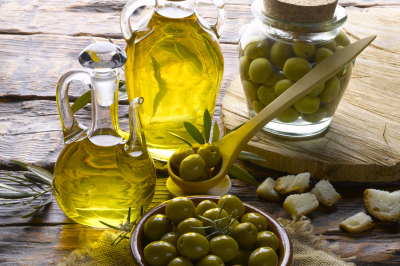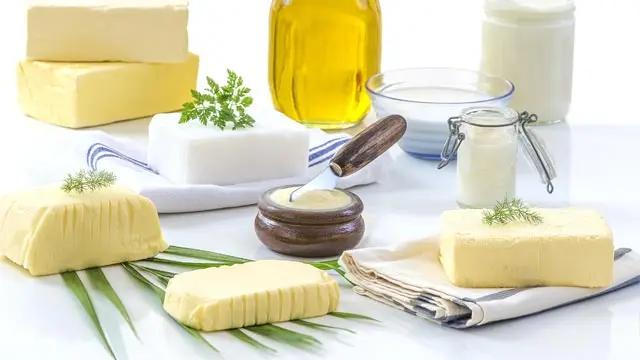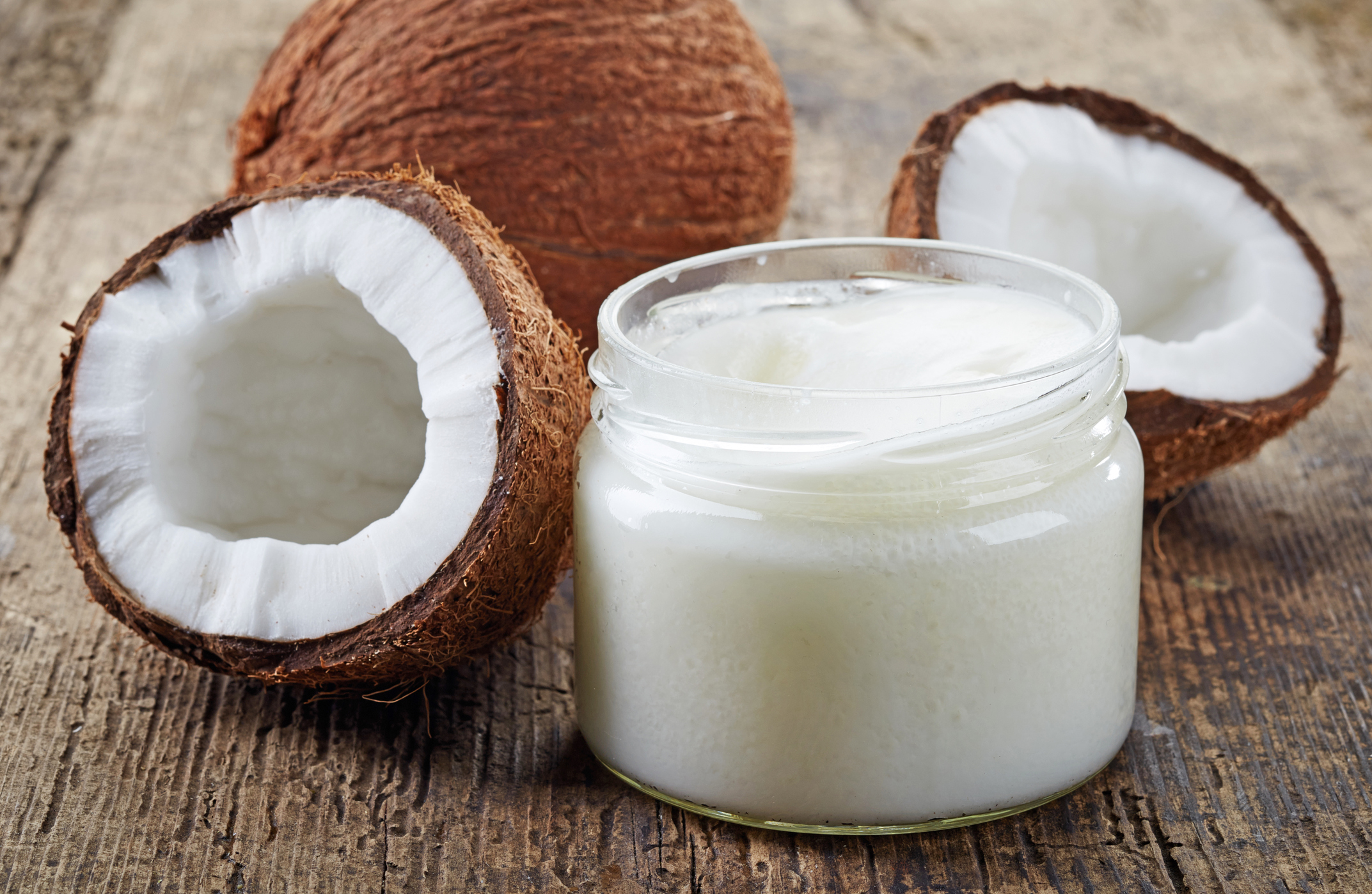 When it comes to fats and oils, we are spoiled for choice. Supermarket shelves are heaving with every conceivable option. But these days it is extremely confusing because there is so much debate about the benefits and harm that come from consuming different types of fats. After years of being told, and telling others, that saturated fat clogs your arteries and makes you fat, there is now mounting evidence that eating some saturated fats may actually help you lose weight and be good for the heart.
When it comes to fats and oils, we are spoiled for choice. Supermarket shelves are heaving with every conceivable option. But these days it is extremely confusing because there is so much debate about the benefits and harm that come from consuming different types of fats. After years of being told, and telling others, that saturated fat clogs your arteries and makes you fat, there is now mounting evidence that eating some saturated fats may actually help you lose weight and be good for the heart.You might think it is obvious that frying with vegetable oils has to be healthier than cooking with animal fat, like lard or butter. But is it really?
When you are frying or cooking at a high temperature (at or close to 180C or 356F), the molecular structures of the fats and oils you are using change. They undergo what's called oxidation - they react with oxygen in the air to form aldehydes and lipid peroxides. At room temperature something similar happens, though more slowly. When lipids go rancid they become oxidised.
Consuming or inhaling aldehydes, even in small amounts, has been linked to increased risk of heart disease and cancer. The oils which were rich in polyunsaturates - the corn oil and sunflower oil - generated very high levels of aldehydes.
 Sunflower and corn oil are fine as long as you don't subject them to heat, such as frying or cooking. It's a simple chemical fact that something which is thought to be healthy for us is converted into something that is very unhealthy at standard frying temperatures.
Sunflower and corn oil are fine as long as you don't subject them to heat, such as frying or cooking. It's a simple chemical fact that something which is thought to be healthy for us is converted into something that is very unhealthy at standard frying temperatures.The olive oil and cold-pressed rapeseed oil produced far less aldehydes, as did the butter and goose fat. The reason is that these oils are richer in monounsaturated and saturated fatty acids, and these are much more stable when heated. In fact, saturated fats hardly undergo this oxidation reaction at all.
Generally olive oil is recommends for frying or cooking. Firstly because lower levels of these toxic compounds are generated, and secondly the compounds that are formed are actually less threatening to the human body.
Current research also suggests that when it comes to cooking, frying in saturate-rich animal fats or butter may be preferable to frying in sunflower or corn oil.
Lard has a reputation as being unhealthy but despite this, is actually rich in monounsaturated fats.
It’s always preferable to do less frying, particularly at high temperature. If you are frying, minimise the amount of oil you use, and also take steps to remove the oil from the outside of the fried food, perhaps with a paper towel.
To reduce aldehyde production go for an oil or fat high in monounsaturated or saturated lipids (preferably greater than 60% for one or the other, and more than 80% for the two combined), and low in polyunsaturates (less than 20%).
 The ideal "compromise" oil for cooking purposes is olive oil because it is about 76% monounsaturates, 14% saturates and only 10% polyunsaturates - monounsaturates and saturates are much more resistant to oxidation than polyunsaturates.
The ideal "compromise" oil for cooking purposes is olive oil because it is about 76% monounsaturates, 14% saturates and only 10% polyunsaturates - monounsaturates and saturates are much more resistant to oxidation than polyunsaturates.When it comes to cooking it doesn't seem to matter whether the olive oil is "extra virgin" or not. "The antioxidant levels present in the extra virgin products are insufficient to protect us against heat-induced oxidation."
Finally, always keep your oils in a cupboard, out of the light, and try not to reuse them as this also leads to the accumulation of nasty side-products.
Polyunsaturated fats contain two or more carbon-carbon double bonds. When eaten in as food such nuts, seeds, fish and leafy greens, they have clear health benefits. However, the benefits of consuming sunflower oil and corn oil, although rich in polyunsaturates, are much less clear.
Monounsaturated oils Contain just one carbon-carbon double bond. They are found in avocados, olives, olive oil, almonds and hazelnuts, and also in lard and goose fat. Olive oil, which is approximately 76% monounsaturated, is a key component in the Mediterranean diet, which has been shown to significantly reduce the risk of heart disease.
Saturated fats have no double bonds between carbon atoms. Although we are encouraged to switch from eating saturated fats, particularly dairy and other fats derived from animals, the benefits of doing so are being challenged.
The percentages of each in the oils below varies somewhat but these values are typical:
Which fats can make you healthy?
There’s a huge variety to choose from and many are an amazingly concentrated source of vital nutrients including vitamins, minerals and essential fatty acids, required by every living cell in the body to function properly.
Some oils give us higher concentrations of nutrients than others. As plants produce vitamin E to protect their seeds against oxidation, it makes sense that seed crops such as rape and flax that have relatively exposed seeds will contain plenty of antioxidant vitamin E. In contrast, a coconut that has a thick, fibrous shell to physically protect its seed will have little need for vitamin E, so only contains trace amounts. The different chemical structures of plant oils also mean that some are better able to keep hold of their nutrients when heated. The more stable oils at higher temperatures include coconut oil and rapeseed oil, whereas groundnut oil will lose one third of its vitamin E levels if used for frying.
Whichever oil you choose, there are a few simple ground rules to help buy the best. Always look for the words “unrefined” and “cold-pressed”, as this will mean they’ve been exposed to lower temperatures during production and therefore will contain more valuable nutrients. They also generally taste better too! Choosing oils naturally darker in colour and with a nutty smell is a sure sign that the oil won’t have been bleached or deodorised either. And oils in darker bottles or metal tins are also less likely to have been exposed to any prolonged light which can cause rancidity.
Unsaturated fats are considered to be the most beneficial to our health and, depending on their structure, they can be either monounsaturated or polyunsaturated. Polyunsaturates fall into two main groups – omega-3s found mainly in fish but also some vegetable oils, and omega-6s found primarily in vegetable oils. Here are just a few of our Wellbeing favourites:
Olive oil is considered the king of oils with both legendary and proven medicinal benefits. Dominated by monounsaturated fats, it is one of the longest-lasting oils and is also relatively stable at medium-high temperatures so excellent for most cooking, but not frying. Its distinctive, full-flavoured taste also makes it a must for salad dressings or just drizzling over just about everything. Yum!
Rapeseed oil is also known as Canola oil and has the highest percentage of unsaturated fats of any vegetable oil, with just under half being polyunsaturates. It has a wonderful golden glow, much like the incredible yellow rape fields we see in late spring and is a light, versatile oil with a neutral flavour, so is a very useful kitchen staple.
Sesame oil is both a mono and polyunsaturated oil, so it can be heated to relatively high temperatures which is why it’s often used in stir-fries. It has a wonderful pungent flavour and aroma and a high content of antioxidants. Choose the plain, untoasted (burnt) varieties.
Pumpkin seed oil is rich in omega-3 and omega-6 and also contains useful quantities of zinc. It’s dark green colour makes it a great oil for drizzling on top of lighter coloured food such as mashed or baked potato, risottos or pasta.
Walnut oil is polyunsaturated and contains both omega-6 and omega-3 fatty acids. It has a delicious, strong nutty taste and just a few drops adds plenty of flavour, so it’s perfect to add a healthy depth to dressings or a nutty essence to cakes and biscuits.
Frying: If you're trying to fry something, you'll want to opt for an oil with a neutral flavor and a high smoke point. Oils with high smoke points are typically those that are more refined, because their heat-sensitive impurities are often removed through chemical processing, bleaching, filtering, or high-temperature heating. A high smoke point is typically one above 375 degrees F, as that's the temperature you usually fry at. Oils with high smoke points include: canola oil, pure olive oil, avocado oil, vegetable oil, safflower oil, and peanut oil.
Baking: If you're looking for something to bake with, it's best to opt for a neutral oil. Think: canola oil, coconut oil, and vegetable oil.
Sautéing and searing: You should choose a more flavourful oil with a lower smoke point. Good options include: canola oil, extra-virgin olive oil, safflower oil, peanut oil, and sesame oil.
Dressing: As for dressing, the flavourful stuff is always best. Go for extra-virgin olive oil or flaxseed oil. Even the “good fats” in some of the oils listed below are still fats, so just because an oil is healthy, doesn’t mean you should down it like it’s calorie free. Here are the healthiest cooking oils to keep in your cupboard.
1. Canola oil
I don't know about you, but I grew up thinking canola oil was one step away from propane—AKA, really friggin bad for you. Shaw begs to differ. She says people often think of it as unhealthy because they associate it with fried food. And though yes, canola oil's high smoke point (400 degrees F) and neutral flavour makes it an excellent vehicle for frying, it isn't actually all that bad for you on its own. The reason it has a high smoke point is because it is chemically processed, but that doesn’t have much of an effect on its health qualities.
Much like most of the other healthy oils on this list, it's low in saturated fats, and can be used for roasting, frying, and baking. Because it has a neutral taste that doesn't do much for your food in the flavour department, cooks don't usually recommend using it for sautéing.
Best for: Frying, roasting, and baking
Not recommended for: Sautéing and salad dressings
2. Extra-virgin olive oil
This oil is high in heart-healthy monounsaturated fats and a quality bottle can truly take you on a taste bud adventure. There's one catch with extra-virgin versus other grades of olive oil: It has a relatively low smoke point (325 to 375 degrees F), which means you may not want to use it for frying or roasting at temperatures above that smoke point. Additionally, cooking a good extra-virgin olive oil will break down its structural integrity which messes with both its flavour and nutrition, so you may want to save your fancy bottle for drizzling and finishing dishes. Find out just how to find your perfect bottle here.
Best for: Sautéing and drizzling
Not recommend for: Frying or roasting above 375 degrees F
3. Pure olive oil
If you love frying things in olive oil (which, like, who doesn't?) you'll want to use the pure stuff instead of extra-virgin olive oil. Pure olive oil has a smoke point of 465 degrees F, which can stand up to that frying heat. Unfortunately, it's not quite as flavourful, because it's chemically processed. It also doesn't have as many heart-healthy fats as high-quality extra-virgin. But that’s the trade off for being able to use it for heavy duty cooking.
Best for: Frying
Not recommended for: Salad dressings
4. Avocado oil
Avocado oil is the new kid on the block. Much like coconut oil, it is beloved by the clean-eating community and surrounded by that same health food halo. However, unlike coconut oil, it doesn't have quite as much saturated fat (only 1.6 grams per tablespoon). It is, however, packed with heart-healthy monounsaturated fats, and it has a high smoke point (375 to 400 degrees F) and neutral flavour without being chemically processed like canola and vegetable oil. It's a bit more expensive than those more processed oils, but if you're interested in avoiding refined foods, want that high smoke point, and don't mind the splurge, then this is a great alternative.
Best for: Frying
Not recommended for: Budget cooking
5. Vegetable oil
Vegetable oil is kind of a sister to canola oil. It's also chemically processed, has a similarly high smoke point (400 to 450 degrees F), and is neutral flavour. Again, these characteristics make it good for roasting, frying, and baking. It’s certainly not the healthiest oil going since the chemical processing depletes the natural mineral content—and that's why it has that high smoke point.
Best for: Frying, roasting, and baking
Not recommended for: Sautéing and salad dressings
6. Safflower oil
If you're still sceptical of vegetable and canola oils, may I recommend safflower oil. Shaw says that safflower oil is low in saturated fats, high in omega-9 fatty acids, and it has a neutral flavour and high smoke point. In fact, at 510 degrees F, it has the highest smoke point of all the oils listed. Safflower oil is sold both chemically processed and cold-pressed like olive oil, and either version you opt for will have that same high smoke point.
Best for: Frying and sautéing
Not recommended for: Salad dressings
7. Peanut oil
Peanut oil is one of the more flavourful oils out there. Meaning, you should probably only use it if you want your food to be peanut flavoured. It can be recommended for adding it to peanut butter cookies, or using it to sauté stir-fry recipes. It also has a high smoke point (450 degrees F) so you can even use it to fry foods like tempura. Like vegetable and canola oil, it is also chemically processed and low in saturated fat.
Best for: Frying and sautéing
Not recommended for: Foods that shouldn't taste like peanu
8. Sesame oil
Another highly flavourful oil, this one goes a long way. Sesame oil adds so much to a dish, so you don't need to use a lot. It’s a great alternative to peanut oil if you have a peanut allergy (or just aren't fond of that peanut flavour). And like extra-virgin olive oil, it's cold-pressed rather than chemically processed. So while it may not have the highest smoke point ever (350 to 410 degrees F), it's a good unrefined option, if that's what you're looking for.
Best for: Sautéing
Not recommended for: Foods that shouldn't taste like sesame
9. Flaxseed oil
This oil has a couple interesting characteristics: For one, it's high in omega-3 fatty acids, so you may want to look into using it more often if you don't eat a lot of omega-3 rich fish. That said, you absolutely can't cook with it, because it's incredibly sensitive to heat and oxidizes quickly, she notes. For this reason, she says you'll want to use it in salad dressings and drizzle it over dips like hummus. Buy small bottles so you can use it up quickly, and be extra sure to store it in a cool dark place.
Best for: Drizzling and salad dressings
Not recommended for: Cooking
10. Coconut oil
I don’t mean to burst any bubbles, but coconut oil isn’t quite the miracle cream it’s advertised as. Well, actually, as a cream, it is kind of a miracle worker (there are so many ways to use it for beauty), but when it comes to preparing meals, I can’t suggest a free pass to eat as much as you want.
In fact, by some measures, it’s about as healthy as butter and much like butter, it’s solid at room temperature because it has a high content of saturated fat—12 grams per 1 tablespoon. There’s a lot of debate over whether or not saturated fat is good or bad for you, so this intel doesn’t mean you should totally rule out coconut oil. Coconut oil, unlike most other saturated fats, raises both your “good” and “bad” cholesterol, and since it’s the ratio of those that matters most to heart health, it gives the oil an edge over butter or lard.
But overall, you’re better off using other oils, like extra-virgin olive oil. The exception: baking. That creamy, fatty quality makes coconut oil a great vegan butter alternative for baked goods. If you do want to use it for other methods like sautéing or roasting, know that it has a relatively low smoke point of 350 degrees F.
Best for: Baking
Not recommended for: Frying

No comments:
Post a Comment